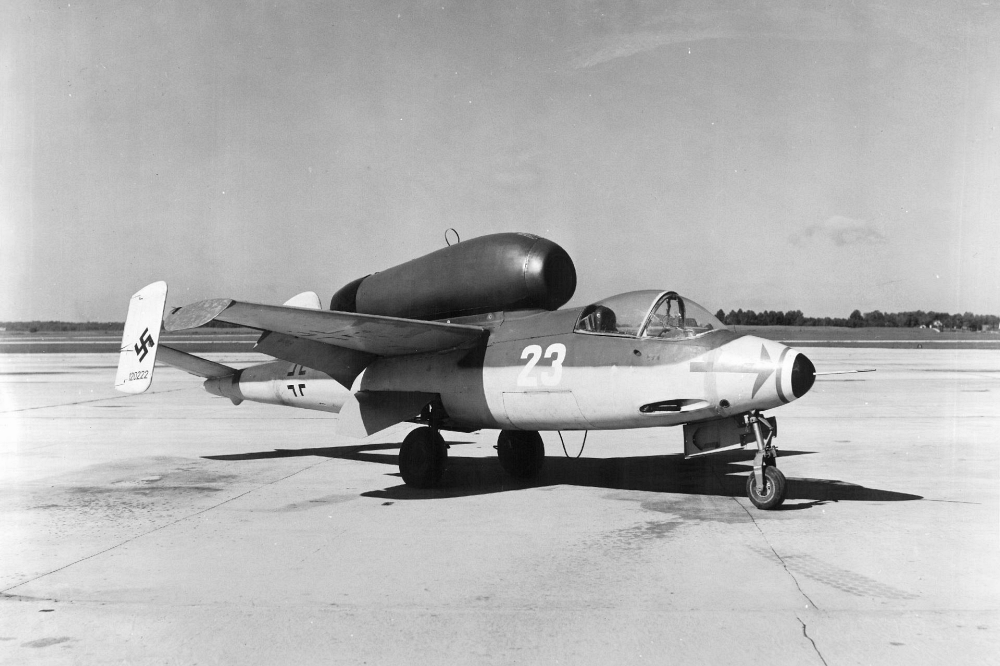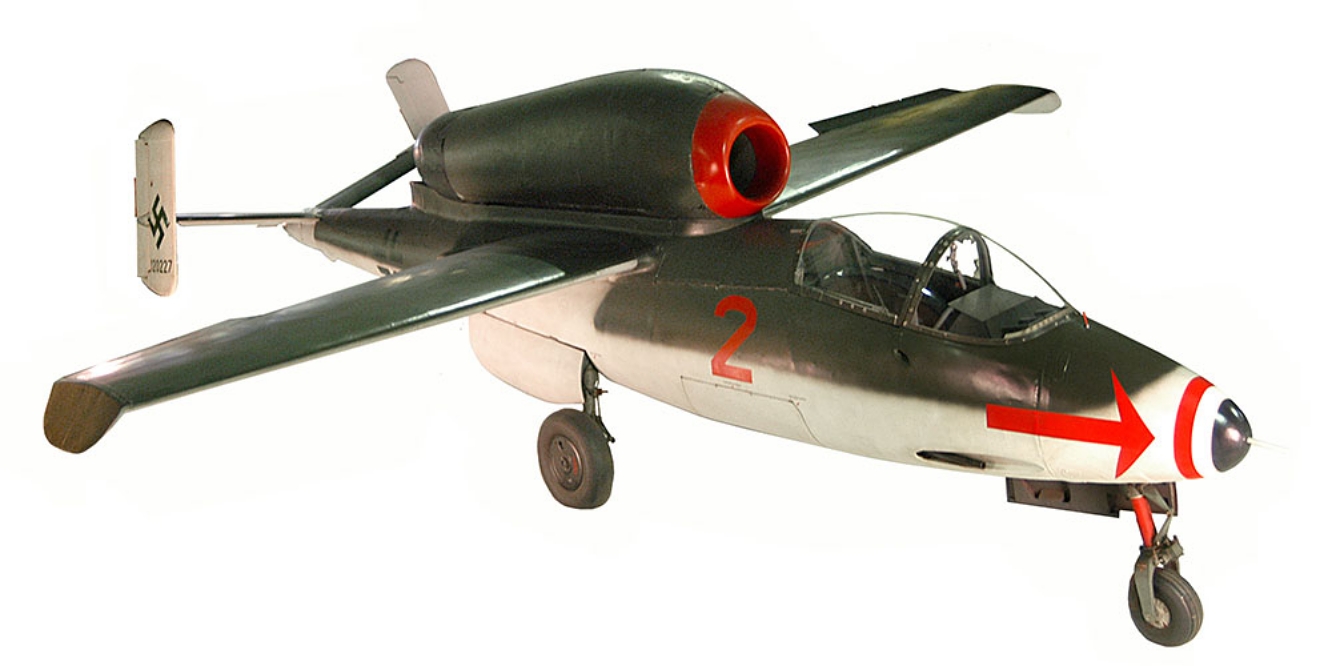The Heinkel He162 was one of Nazi Germany’s last ditch attempts to win back the control of the skies with a cheap jet fighter capable of being flown by almost anyone. Like all the other weapons it came too late to have any effect on the outcome of the war.
By September 1944 the Western Allies and the Russians were closing in on the borders of German homeland and in a desperate attempt to reverse their defeats the Germans began a frantic search for a war-winning ‘wonder weapon’.
The Heinkel He 162 Volksjäger (German, “People’s Fighter”) was a German single-engine, jet-powered fighter aircraft fielded by the Luftwaffe late in World War II. Developed under the Emergency Fighter Program, it was designed and built quickly and made primarily of wood as metals were in very short supply and prioritised for other aircraft. Volksjäger was the Reich Air Ministry’s official name for the government design program competition won by the He 162 design.
Other names given to the plane include Salamander, which was the codename of its wing-construction program, and Spatz (“Sparrow”), which was the name given to the plane by the Heinkel aviation firm.
The aircraft was notable for its small size; although almost the same length as a Messerschmitt Bf 109, its wingspan was much shorter at 7.2 metres (24 ft) vs. 9.9 metres (32 ft) for the Bf109. Most distinctive was its top-mounted engine, which combined with the aircraft’s low landing gear allowed the engine to be easily accessed for maintenance.
This made bailing out of the aircraft without hitting the engine difficult, and the He 162 was the first single-engine aircraft provided with an ejection seat in an operational setting. The small size left little room for fuel, which combined with the inefficient engine resulted in very low endurance – on the order of 20 minutes – and it only had room for two autocannon, making it relatively underarmed for the era.
A series of fatal accidents during testing required a series of refinements that delayed the program. Although production lines were set up and deliveries began in early 1945, the impending defeat of Germany by that time made the effort pointless. Of nearly 1,000 aircraft on the assembly lines, only about 120 were delivered to the airfields and most of those never flew, usually due to shortages of parts, fuel, and pilots.
Small numbers were used in development squadrons and these ultimately saw combat in a few cases during April 1945, yet the He 162 also proved to be quite dangerous to its own pilots as its tiny fuel load led to a number of aircraft crashing off field, while additional losses were attributed to structural failure.
Production was still running when the war ended in May 1945. Numerous aircraft were captured by the Allied forces along with ample supplies of parts from the production lines. Eric Brown flew one just after the war and considered it a first-rate aircraft with few vices.
Several He 162s have been preserved in museum collections around the world.
Sources: RAF War Museum; Wikipedia; YouTube; Plane Encyclopedia



